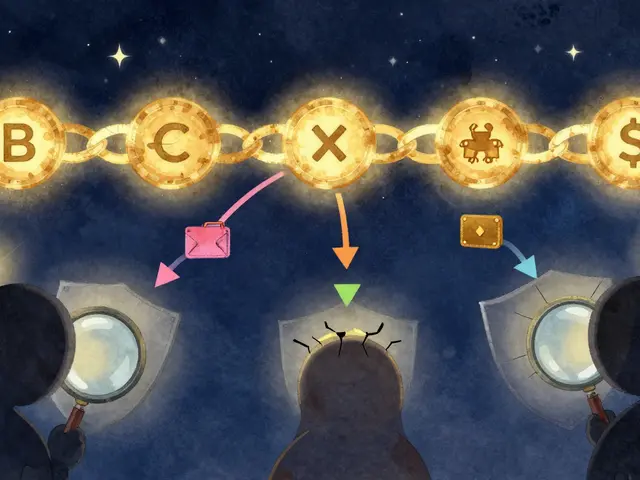Bibox Review: Security, Fees, and Usability
When checking out Bibox, a cryptocurrency exchange that offers spot, margin and futures trading. Also known as Bibox exchange, it targets both retail and professional traders. Bibox review brings together security checks, licensing details, fee breakdowns and user‑interface insights so you can decide if it fits your needs.
The first thing to ask is whether Bibox holds a proper license, a regulatory approval from a recognized financial authority. The platform claims registration in the Cayman Islands, but there is no public record of a formal banking licence or a crypto‑specific permit. That lack of clear licensing means traders have to weigh the risk of operating on an un‑regulated venue. In practice, many exchanges without explicit licences still attract users because they provide deep liquidity and a broad token list, yet the regulatory gray area stays a key factor in any Bibox review.
Security is the next pillar of any exchange assessment. Bibox publishes a self‑claimed security audit, a third‑party code review that checks for vulnerabilities in smart‑contract and backend systems, but the report is not openly downloadable. Without a transparent audit, users cannot verify the integrity of the platform’s contracts or confirm the existence of a “proof of reserves” mechanism. Some exchanges publish real‑time proof‑of‑reserve dashboards, which boost confidence by showing that user balances match on‑chain holdings. Bibox’s opacity on this front makes the security component of the review harder to validate, so traders often compare it against exchanges that openly share audit results.
Fees directly affect profitability, especially for frequent traders. Bibox uses a maker‑taker model where makers pay 0.1% and takers pay 0.2% on spot trades. The fee schedule scales down with higher 30‑day volumes, dropping to as low as 0.07% for makers and 0.14% for takers. Futures contracts add a funding rate that can be positive or negative, influencing the overall cost of holding positions. In a Bibox review, the fee structure is a core metric because even small differences add up over many trades. Compared with major rivals, Bibox’s fees sit in the mid‑range—cheaper than some legacy exchanges but higher than the newest DeFi platforms offering near‑zero fees.
User experience is often the make or break factor for new traders. Bibox’s web UI follows a familiar layout: a left‑hand navigation panel, a central chart window powered by TradingView, and order‑entry boxes at the bottom. The mobile app mirrors the desktop experience, though some users report slower load times on older devices. Advanced features like API access, stop‑limit orders, and customizable hotkeys are available, but the documentation can be sparse. In a practical Bibox review, you’ll notice that the platform balances simplicity for beginners with enough depth for seasoned traders, yet the learning curve spikes when digging into API integration.
Liquidity and market coverage also shape the overall picture. Bibox lists over 300 trading pairs, with strong depth on major coins like BTC, ETH, and USDT. However, niche altcoins often suffer from thin order books, leading to higher slippage on larger orders. The exchange supports fiat deposits via credit cards and bank transfers in a few regions, but geographic coverage remains limited compared to global players. For traders focused on high‑volume, low‑slippage markets, Bibox can be a solid secondary venue, while primary liquidity seekers might prefer larger exchanges.
All these elements—licensing ambiguity, security transparency, fee tiers, UI design, and liquidity depth—combine to form a comprehensive Bibox review. Below you’ll find a curated list of articles that dive deeper into each of these topics, from detailed security audits to step‑by‑step guides on optimizing fee savings. Explore the collection to get the full picture and decide whether Bibox aligns with your trading strategy.
Bibox Crypto Exchange Review 2025: Fees, Trust Rating & Trading Features
A practical 2025 review of Bibox crypto exchange covering fees, trust scores, features, and whether it's worth using.





